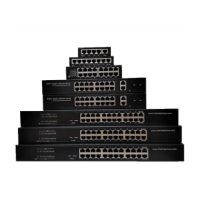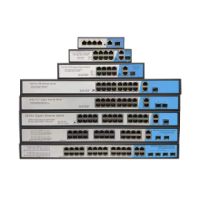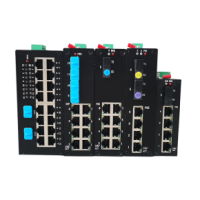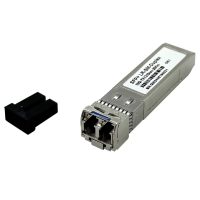Introduction
Zhenshi Communication is a strong, national high-tech enterprise, specialising in optical transmission equipment, access network equipment, data communication equipment production, sales and service in one of the high-tech enterprises. Zhenshi Communication business mainly focuses on optical transmission, access network equipment, network communication products, POE switches and wireless transmission equipment research and development, production and sales.
Adhere to the integrity, efficiency, innovation and excellence of the entrepreneurial spirit, through price, adequate stocking, rapid response, assured service and other strategies to better serve its customer. Zhenshi Communication have many senior experts in the communications industry, these digital optical communications, integrated access, data transmission, digital monitoring equipment, interface conversion, POE switches and other technologies have a wealth of experience to provide users with more reliable, economical communications equipment and network services.
Industrial Grade Switches
Industrial switches play a crucial role in industrial automation by enabling reliable and efficient networks. As the demands for real-time data and seamless communication continue to rise, these switches have become essential components in industrial environments. From manufacturing facilities to power plants, Zhenshi Communication Industrial Ethernet Switch is a robust infrastructure for seamlessly integrating various devices and systems.
This series of equipment adopts store-and-forward mode, high performance, low power consumption design, with compact size, easy to use, long life and other advantages. Product design in line with Ethernet standards, adding lightning, anti-static, anti-reverse connection and other protective measures, -40℃ ~ +85℃ wide range of operating temperatures, no fear of extreme temperatures, stable and reliable performance, automatic learning and updating of the MAC address, comprehensively enhance the transmission and switching performance of the network, designed for industrial environments. Dual redundant power inputs, multiple protection for long time work more stable, industrial Ethernet switch products using mature technology and open network standards, adapt to low temperature and high temperature, strong anti-electromagnetic interference, anti-smoke, anti-vibration and anti-shaking. Support DIN-rail mounting, with IP40 protection level, is the perfect choice for harsh environments, widely used in intelligent traffic, industrial monitoring, mineral industry, power, water conservancy, oil fields, infrastructure, ports, energy, farms, and wireless coverage and other data transmission areas, but also applies to many military and public utility market applications, such as more than the commercial product specifications of the environmental conditions.
Difference between Industrial Grade Switches and Ethernet Switches
When talking about the differences between industrial switches and ethernet switches, the main aspects involved are:
Design purpose and environmental adaptability
Industrial switches are usually designed to meet the needs of harsh environments, so they have higher environmental adaptability and reliability. Ethernet switches are typically designed for mild office environments.
Enclosure material
Industrial switches typically use sturdy and durable metal materials to resist the effects of environmental factors such as vibration, high temperature, and electromagnetic interference. Ethernet switches typically use plastic enclosures, which are sufficient for light usage.
Protection level
Industrial switches typically have higher protection levels and can work in more severe environments. Ethernet switches typically do not have these protection features.
Temperature range
Industrial switches can operate over a wider temperature range and can withstand higher or lower temperatures. Ethernet switches typically only work within a narrow temperature range.
Ethernet Switching Series
This series of product are designed to comply with ethernet standard, stable and reliable performance, using store-and-forward mode to automatically learn and update the MAC address, which comprehensively improves the transmission and switching performance of the network. At the same time, the device provides POE power supply, so that the receiving device does not need external equipment, only a network cable, you can simultaneously transmit power and network data wiring is very simple and convenient, can effectively reduce construction costs and improve construction efficiency. This series of products are compatible with all mainstream cameras on the market, widely used in small and medium-sized network access layer, convergence layer, the core layer, and computers, printers, webcams, wireless AP compatible with the expansion of multimedia transmission systems, wireless network transmission, industry broadband private network and other network equipment; and applicable to enterprises, security, transport, power grids, mineral industry, water conservancy, oil fields, small businesses, Internet cafes, hotels, and schools and other related data transmission areas. and schools and other related data transmission fields, the scene of a wide range of applications.
POE Managed Switches
L2 POE Managed Switches ( 24 Gigabit Ethernet ports +4 SFP )
Optimize your network with our advanced Layer 2 Management Switch, featuring 241000M PoE ports and 41.25G SFP optical ports. With a robust 166G exchange capacity and a packet forwarding rate of 123.504Mbps, it delivers reliable performance for demanding environments. Built-in 52V7.7A power supply ensures efficient operation, while advanced features like VLAN, DHCP server, and ERPS support enhance network flexibility and security.
Key Highlights:
241000M PoE Ports & 41.25G SFP Optical Ports
166G Exchange Capacity & 123.504Mbps Forwarding Rate
Advanced VLAN, DHCP Server, and ERPS Support
Comprehensive Security with ACL, QOS, and Loop Detection

L3 POE Managed Switches ( 24 Gigabit Ethernet ports + 4 SFP+ )
Power your network with our high-performance Layer 3 Management Switch, featuring 241000M PoE ports and 410G SFP optical ports. With an impressive 248G exchange capacity and a packet forwarding rate of 184.512Mbps, it’s designed for high-demand environments. Equipped with advanced routing protocols (RIP, OSPF), VLAN support, and robust security features like ACL and QOS, this switch ensures efficient and secure network management.
Key Highlights:
241000M PoE Ports & 410G SFP Optical Ports
248G Exchange Capacity & 184.512Mbps Forwarding Rate
Advanced Routing: RIP, OSPF, and Static Routing
Comprehensive Security with ACL, QOS, and VLAN Support

L2 Managed Switches
Layer 2 Network Management Switch (24 Gigabit Ethernet ports + 4 SFP)
Simplify your network with this 24-port Gigabit switch, featuring 24 10/100/1000Mbps Ethernet ports and 4 Gigabit SFP optical ports. With a 148G exchange capacity and 110.123Mbps forwarding rate, it’s ideal for small to medium-sized networks. Advanced features like VLAN, ERPS, static routing, and robust security (ACL, QOS) ensure efficient and secure operations.
Key Highlights:
24 Ethernet Ports & 4 Gigabit SFP Ports
148G Exchange Capacity & 110.123Mbps Forwarding Rate
Advanced VLAN, ERPS, & Static Routing Support
Comprehensive Security with ACL, QOS, and Loop Detection

Layer 2 Network Management Switch (16 Gigabit Ethernet ports + 8 SFP)
Enhance your network with this versatile switch, offering 16 10/100/1000Mbps Ethernet ports and 8 Gigabit SFP optical ports. With a 148G exchange capacity and 110.123Mbps forwarding rate, it’s perfect for mixed environments. Features like VLAN, ERPS, static routing, and advanced security (ACL, QOS) ensure reliable and secure connectivity.
Key Highlights:
16 Ethernet Ports & 8 Gigabit SFP Ports
148G Exchange Capacity & 110.123Mbps Forwarding Rate
Advanced VLAN, ERPS, & Static Routing Support
Robust Security with ACL, QOS, and Loop Detection

Layer 2 Network Management Switch (16 Gigabit Ethernet ports + 12 SFP)
Optimize your network with this high-capacity switch, featuring 16 10/100/1000Mbps Ethernet ports and 12 Gigabit SFP optical ports. With a 148G exchange capacity and 110.123Mbps forwarding rate, it’s designed for demanding environments. Advanced features like VLAN, ERPS, static routing, and security (ACL, QOS) ensure seamless and secure operations.
Key Highlights:
16 Ethernet Ports & 12 Gigabit SFP Ports
148G Exchange Capacity & 110.123Mbps Forwarding Rate
Advanced VLAN, ERPS, & Static Routing Support
Comprehensive Security with ACL, QOS, and Loop Detection

Layer 2 Network Management Switch (8 Gigabit Ethernet ports + 16 SFP)
Maximize your network performance with this high-density switch, offering 8 10/100/1000Mbps Ethernet ports and 16 Gigabit SFP optical ports. With a 148G exchange capacity and 110.123Mbps forwarding rate, it’s perfect for environments requiring extensive optical connectivity. Features like VLAN, ERPS, static routing, and robust security (ACL, QOS) ensure reliable and secure operations.
Key Highlights:
8 Ethernet Ports & 16 Gigabit SFP Ports
148G Exchange Capacity & 110.123Mbps Forwarding Rate
Advanced VLAN, ERPS, & Static Routing Support
Robust Security with ACL, QOS, and Loop Detection

L3 Managed Switches
Layer 3 Management Switch (24 Gigabit PoE + 4 10G SFP+ )
Boost your network with this high-performance Layer 3 switch, featuring 24 Gigabit PoE ports, 4 10G SFP optical ports, 1 Console port, and 1 USB port. With a 248G exchange capacity and 184.512Mbps forwarding rate, it’s built for demanding environments. Advanced features like RIP/OSPF routing, VLAN, and robust security (ACL, QOS) ensure efficient and secure network management. Perfect for businesses needing scalable and reliable connectivity.
Key Highlights:
24 Gigabit PoE Ports & 4 10G SFP Ports
1 Console Port & 1 USB Port for Easy Management
248G Exchange Capacity & 184.512Mbps Forwarding Rate
Advanced Routing (RIP, OSPF) & VLAN Support
Comprehensive Security with ACL, QOS, and Loop Detection

Layer 3 Management Switch (48 Gigabit + 6 10G SFP+ )
Designed for high-density networks, this switch offers 48 Gigabit Ethernet ports, 6 10G SFP optical ports, 1 Console port, and 1 USB port. With a 456G exchange capacity and 339.264Mbps forwarding rate, it delivers exceptional performance. Features like RIP/OSPF routing, VLAN, and advanced security (ACL, QOS) make it ideal for large-scale deployments.
Key Highlights:
48 Gigabit Ethernet Ports & 6 10G SFP Ports
1 Console Port & 1 USB Port for Easy Management
456G Exchange Capacity & 339.264Mbps Forwarding Rate
Advanced Routing (RIP, OSPF) & VLAN Support
Robust Security with ACL, QOS, and Loop Detection

Layer 3 Management Switch (16 SFP + 8 GE/SFP Combo + 4 10G SFP+ )
Optimize your network with this versatile switch, featuring 16 Gigabit SFP ports, 8 optical multiplexing ports, 4 10G SFP ports, 1 Console port, and 1 USB port. With a 248G exchange capacity and 184.512Mbps forwarding rate, it’s perfect for high-speed data transfer. Advanced routing (RIP, OSPF), VLAN, and security features (ACL, QOS) ensure reliable and secure operations.
Key Highlights:
16 Gigabit SFP & 4 10G SFP Ports
1 Console Port & 1 USB Port for Easy Management
248G Exchange Capacity & 184.512Mbps Forwarding Rate
Advanced Routing (RIP, OSPF) & VLAN Support
Comprehensive Security with ACL, QOS, and Loop Detection

Layer 3 Management Switch (16 Gigabit Ethernet + 8 GE/SFP Combo+ 4 10G SFP+ )
Enhance your network with this powerful switch, offering 16 Gigabit Ethernet ports, 8 optical multiplexing ports, 4 10G SFP ports, 1 Console port, and 1 USB port. With a 248G exchange capacity and 184.512Mbps forwarding rate, it’s designed for high-performance environments. Advanced routing (RIP, OSPF), VLAN, and security features (ACL, QOS) ensure seamless and secure connectivity.
Key Highlights:
16 Gigabit Ethernet & 4 10G SFP Ports
1 Console Port & 1 USB Port for Easy Management
248G Exchange Capacity & 184.512Mbps Forwarding Rate
Advanced Routing (RIP, OSPF) & VLAN Support
Robust Security with ACL, QOS, and Loop Detection

Understanding Switch Technologies: From Unmanaged to Fully Managed
L2 vs. L3 Switches: Understanding the Difference
Layer 2 (L2) switches operate at the data link layer and forward traffic based on MAC addresses. They are primarily used for switching within the same network, ensuring efficient communication between devices in a LAN. L2 switches do not perform IP-based routing, so traffic between different subnets or VLANs requires an external router.
Layer 3 (L3) switches function at both the data link and network layers, enabling them to process IP addresses in addition to MAC addresses. This allows them to perform routing between VLANs without needing a separate router. L3 switches support features like static and dynamic routing, making them suitable for networks that require inter-subnet communication.
Understanding Network Switches: Unmanaged, Web-Managed, and Fully Managed
Network switches can be categorized into unmanaged, web-managed (smart), and fully managed switches with a console port, each offering different levels of control and functionality.
Unmanaged switches are the most basic type, operating with no configuration options. They are plug-and-play devices that automatically forward traffic between connected devices, making them ideal for small networks or simple setups where manual control over traffic is unnecessary. While easy to use, they lack features like VLANs, Quality of Service (QoS), and monitoring capabilities.
Web-managed (smart) switches provide a middle ground between unmanaged and fully managed switches. They feature a simplified web-based interface for configuring essential network settings such as VLANs, QoS, and traffic monitoring. These switches offer more control than unmanaged ones while remaining accessible to users who may not have extensive networking expertise. However, they lack the deep customization and automation capabilities of fully managed switches.
Fully managed switches with a console port provide the highest level of network control and flexibility. They support advanced features such as dynamic routing, access control lists (ACLs), SNMP monitoring, and remote configuration through CLI-based protocols like SSH and Telnet. The inclusion of a console port allows direct access via a serial connection, enabling administrators to configure and troubleshoot the switch even if network connectivity is lost. This makes them essential in enterprise environments where high availability, security, and detailed network management are critical.
At NovusDash’s networking solutions we offer different categories of switching from unmanaged, web managed and fully managed switches. Please check out our products families below to explore more.
LAN Campus Solution Design
A hierarchical network design involves dividing the network into discrete layers. Each layer, or tier, in the hierarchy provides specific functions that define its role within the overall network. This helps the network designer and architect to optimize and select the right network hardware, software, and features to perform specific roles for that network layer. Hierarchical models apply to both LAN and WAN design.
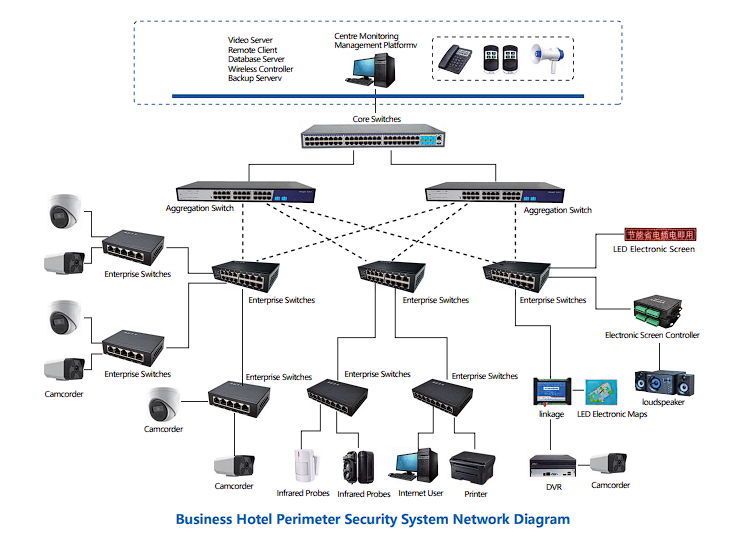
The benefit of dividing a flat network into smaller, more manageable blocks is that local traffic remains local. Only traffic that is destined for other networks is moved to a higher layer
A typical enterprise hierarchical LAN campus network design includes the following three layers:
- Access layer: Provides workgroup/user access to the network
- Distribution layer: Provides policy-based connectivity and controls the boundary between the access and core layers
- Core layer: Provides fast transport between distribution switches within the enterprise campus
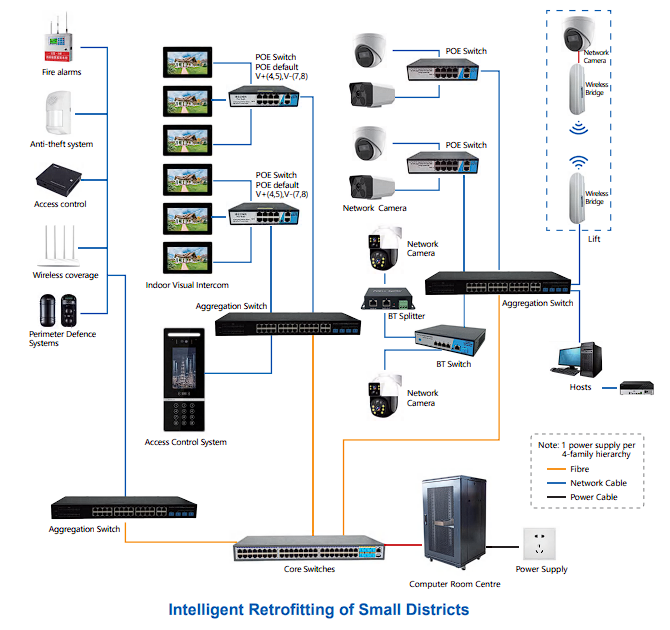
There are no absolute rules for the way a campus network is physically built. While it is true that many campus networks are constructed using three physical tiers of switches, this is not a strict requirement. In a smaller campus, the network might have two tiers of switches in which the core and distribution elements are combined in one physical switch. This is referred to as a collapsed core design.
1. Access Layer
In a LAN environment, the access layer highlighted grants end devices access to the network. In the WAN environment, it may provide teleworkers or remote sites access to the corporate network across WAN connections.
The access layer for a small business network generally incorporates Layer 2 switches and access points providing connectivity between workstations and servers.
The access layer serves a number of functions, including
- Layer 2 switching
- High availability
- Port security
- QoS classification and marking and trust boundaries
- Address Resolution Protocol (ARP) inspection
- Virtual access control lists (VACLs)
- Spanning tree
- Power over Ethernet (PoE) and auxiliary VLANs for VoIP
2. Distribution Layer
The distribution layer aggregates the data received from the access layer switches before it is transmitted to the core layer for routing to its final destination. The distribution layer is the boundary between the Layer 2 domains and the Layer 3 routed network.
The distribution layer device is the focal point in the wiring closets. Either a router or a multilayer switch is used to segment workgroups and isolate network problems in a campus environment.
A distribution layer switch may provide upstream services for many access layer switches.
The distribution layer can provide
- Aggregation of LAN or WAN links.
- Policy-based security in the form of access control lists (ACLs) and filtering.
- Routing services between LANs and VLANs and between routing domains (RIP, OSPF).
- Redundancy and load balancing.
- A boundary for route aggregation and summarization configured on interfaces toward the core layer.
- Broadcast domain control, because routers or multilayer switches do not forward broadcasts. The device acts as the demarcation point between broadcast domains.
3. Core Layer
The core layer is also referred to as the network backbone. The core layer consists of high-speed network devices such as L3 managed switches with 10G interfaces. These are designed to switch packets as fast as possible and interconnect multiple campus components, such as distribution modules, service modules, the data center, and the WAN edge.
The core layer is critical for interconnectivity between distribution layer devices (for example, interconnecting the distribution block to the WAN and Internet edge).
The core should be highly available and redundant. The core aggregates the traffic from all the distribution layer devices, so it must be capable of forwarding large amounts of data quickly.
Considerations at the core layer include
- Providing high-speed switching (i.e., fast transport)
- Providing reliability and fault tolerance
- Scaling by using faster, and not more, equipment
- Avoiding CPU-intensive packet manipulation caused by security, inspection, quality of service (QoS) classification, or other processes

